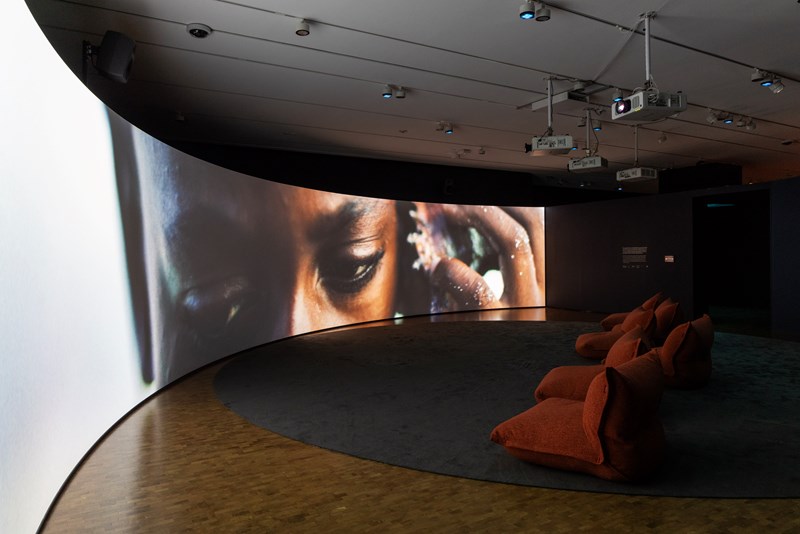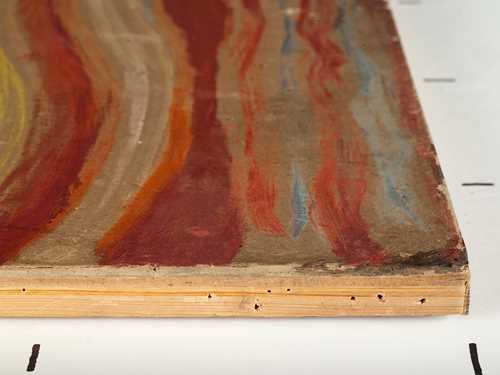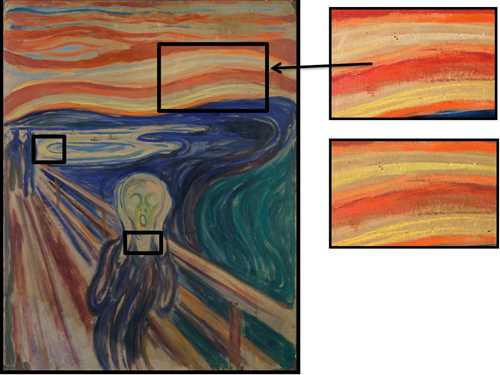Breaking down barriers with Arif at MUNCH
How to create a museum experience for all of Oslo’s citizens? The immersive experience Arif at MUNCH is our attempt to make art relevant and accessible to a wide and diverse audience. Find out how MUNCH has tried to break down barriers by embracing storytelling, community building, collaboration across fields and user-centred principles.

Community Building at MUNCH
In Arif at MUNCH (31.08.2024 – 01.12.2024), Arif – one of Norway’s most celebrated hip hop artists – embarks on an emotional journey through time and space in search of his personal and artistic identity. Drawing inspiration from the art of Edvard Munch, this immersive experience merges Arif’s music with a monumental film installation, interactivity, light design, events, fashion, product development and more.
The experience takes on the challenge of breaking down barriers that prevent young people from seeing MUNCH as a space where they can feel included. Arif recalls his childhood attitude to the former Munch Museum:
"As a kid, I thought it was scary going into the [old] Munch Museum at Tøyen. I thought, this is too stiff. This is not for me, this is not for us. So we had to do something about this. Because I know there are many young people who feel like I did back then. […] Edvard Munch gave his art to Oslo. And from Oslo to the rest of the world. Everybody living in this city should be able to come and see his and others’ works. But first people need to understand that they are welcome here. I believe people maybe don’t understand this. So maybe [my] exhibition can help fix this."
Arif's experience, reflects what we observe every day at the museum: many young people, particularly those from underrepresented communities, feel disconnected from it. Oslo is a diverse and divided European capital, with large differences in terms of economic and social status between east and west, between centre and periphery. To make Arif at MUNCH an experience for all of Oslo’s citizens, regardless of their background, its events programme for the exhibition’s community space plays a central role. This space is meant as a sort of living room for the community where young people and adults can feel comfortable and contribute to a shared cultural experience.
Since Arif’s family originated from the East African island of Zanzibar, the events programming has a special focus on the African diasporic communities in Oslo, as well as on hip hop culture. At the same time, the various events happening in the space – ranging from coffee ceremonies to fanzine, jewellery and hairdressing workshops, DJ sets, hip hop dance battles, concerts and talks – aim to engage all of Oslo’s young people. However, we must also admit that our plan was to make the community space coszier and more welcoming than it turned out, for example, by serving beverages and even food. Unfortunately, these ambitions were too difficult to meet, because of a variety of reasons, among them security and hygiene concerns, logistics and budget.
Immersive Storytelling Across Borders
Standing in front of Edvard Munch’s paintings can be a deeply moving experience. However, the formula of looking at old pictures by a long-dead artist is often not an engaging pitch to young and diverse non-visitors. Collaborating with a music artist like Arif, who has a large following among young people from all kinds of backgrounds, gave us the opportunity to offer a more persuasive alternative. Arif at MUNCH is deeply rooted in Arif’s personal experiences and in the idea that art, music and culture can bring people together.

The broad range of collaborators involved in developing the show enabled us to tell Arif’s story through the interplay of various media, artistic forms and channels. This includes Chinese-American filmmaker and visual artist Andrew Thomas Huang, who developed the overall concept and narrative in close collaboration with Arif and the museum team. His artistic contribution is to make Arif’s story feel authentic, original and intimately moving. The collaboration with British filmmaker Wukda was intended to ensure the emotional and visual impact of the film shown in the space as the main component of telling Arif’s story. In addition, we collaborated with a broad network of architects, interaction and lighting designers, product developers, content creators and publishers to create a multiform narrative universe around Arif’s music. Given the complexity and relatively short timeline of the project, not all collaborations unlocked their full potential, resulting in less than ideal outcomes in terms of the visitor experience.

Mapping User-Journeys

Taking users’ perspectives seriously and challenging our own biases is critical to creating a community and staying relevant to a broad audience. Trying to understand the expectations, interests and habits of the desired user groups, we facilitated a user-driven process rooted in UX and service design methodologies. We mapped out the entire user journey and gained valuable insights and feedback on the experience’s various components. For this, we collaborated with our MUNCH Design Activists and Bydel Gamle Oslo Young Crew.
These young adults aged 14-19 served as experts on youth perspectives, helping to shape the museum's offerings into something more relevant and engaging. As part of their role, the MUNCH Design Activists interviewed Arif and Andrew Thomas Huang to get to know their creative practices. These interviews informed their own production of a fanzine at MUNCH.

The young design activists used the fanzine to explore art on their own terms and language. The project was facilitated by art educators at MUNCH, Justine Nguyen and Siddharta Cardenal Kapoor.
Photo: screenshot @MUNCH ung
The Young Crew participated as concept testers and expert users in two rounds of the design process. The insights gathered from these sessions led to improved listening experiences in the space and on users’ mobiles, and in the design of message cards that allow users to communicate with Arif as he works on new music in a music studio built into the space. We also collaborated with our internal stakeholders – young members of the front-of-house staff. These acted as experts both on our visitors and on youth culture. They provided valuable insights on the experience and user journey, helping us to further refine our approach. At the same time, we have not always been able to cater to the needs and expectations of the target groups. For instance, Arif’s music is not as broadly available and accessible as users wanted it to be, because of various publishing issues.
‘Feelgood’ Thresholds
The threshold for visiting MUNCH is perceived as high by certain groups. However, if close friends encourage them to go, they are more likely to visit. To lower the threshold for re-visiting MUNCH, we have created a special ‘Welcome Back’ card, which is handed out by our front-of-house staff and hosts in the exhibition room. This card invites young people to return to MUNCH and bring a friend along, all free of charge. This is a ‘feelgood’ strategy, aiming to ensure that they are met with genuine friendliness and that they feel welcome. We conducted sessions with our front-of-house team, discussed their behaviour and visitor approach, and developed an internal information website.

Arif’s Universe Translated into Products

Photo: Also Known AS
To further extend the universe around the immersive experience, MUNCH’s commercial department became involved early in the project, developing a product range that visitors can take home and enjoy. Our starting point was to gain an understanding of the visitors – their interests, needs and what would resonate in the market. From there, we made a concept that had to balance between honouring both the essence of the artist, the narrative of the experience and the museum’s identity.
This was done in collaboration with graphic designer Even Suseg from Also Known AS and illustrator Maria Maaneskiold. The design process has led to the creation of a universe of illustrations and a product collection. Drawing inspiration from visual elements of the immersive experience, such as seashells and the ocean, the designs also weave in quotes from Edvard Munch’s writings and the show’s wall texts, adding layers of meaning and storytelling. The collection features clothing, headphone accessories, exhibition posters and jewellery.
‘Love, Arif’
As mentioned, the Front of House staff manning the exhibition space carry a personal message from Arif on small cards, which they hand out to visitors. The message ends: ‘Love, Arif’. This very personal approach has been important for us throughout the projects development. A diverse group of people from different parts of the world, and with a broad range of skills, have come together and brought love and passion to this project. Will it translate into real engagement from all of Oslo’s population? This is another story yet to be told.
Written by: Nikita Mathias (curator Arif at MUNCH), Birgitte Aga (head of innovation & research, MUNCH), Awo Mahamoud Abdulqadir (program producer for young audience, MUNCH), Julie L. Parisi (innovation catalyst, MUNCH), Silje Lian Moen (business developer, MUNCH)



